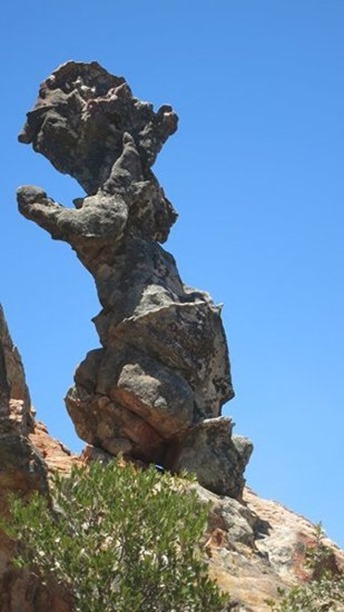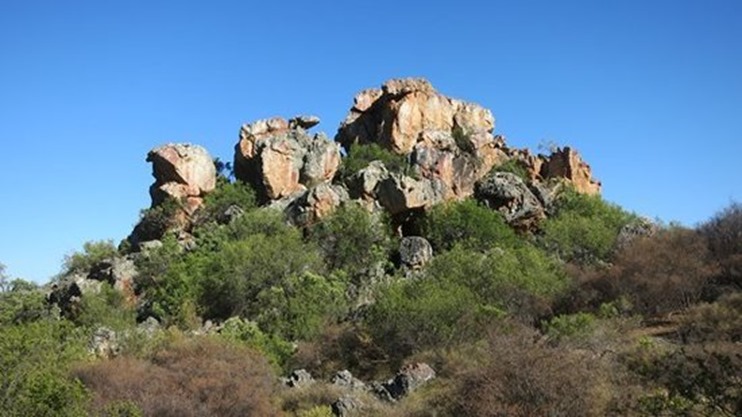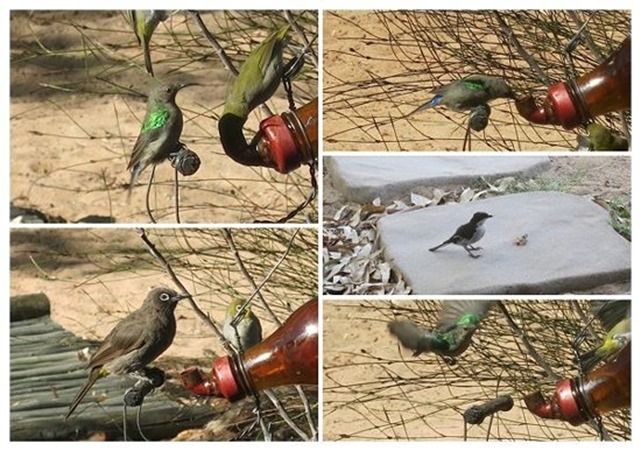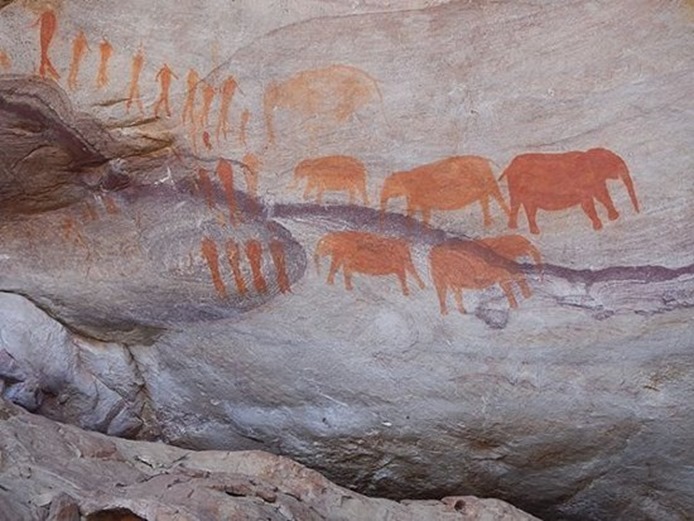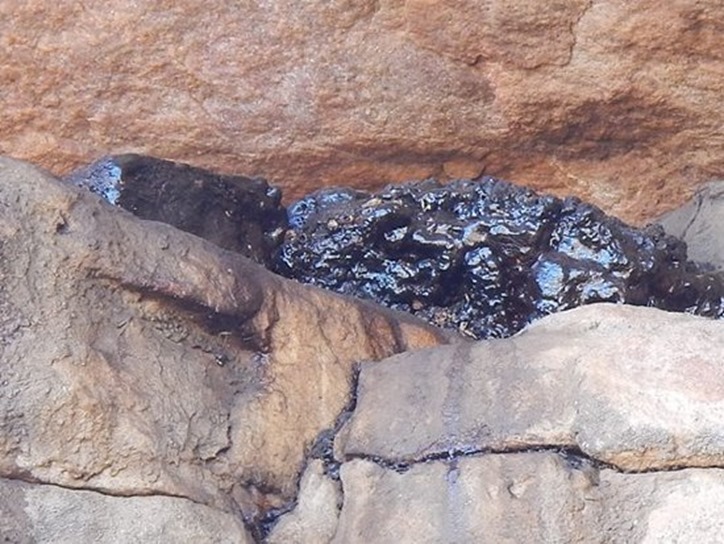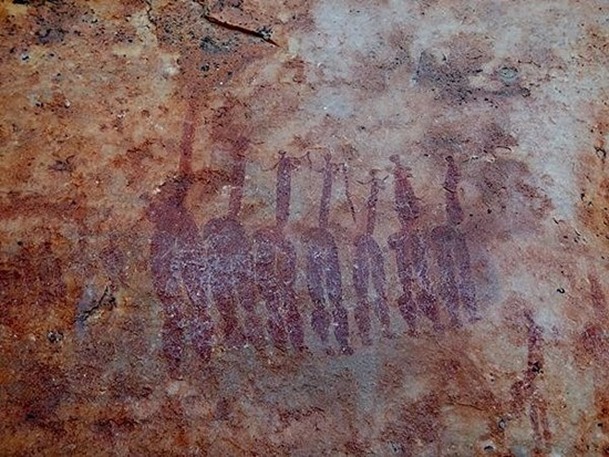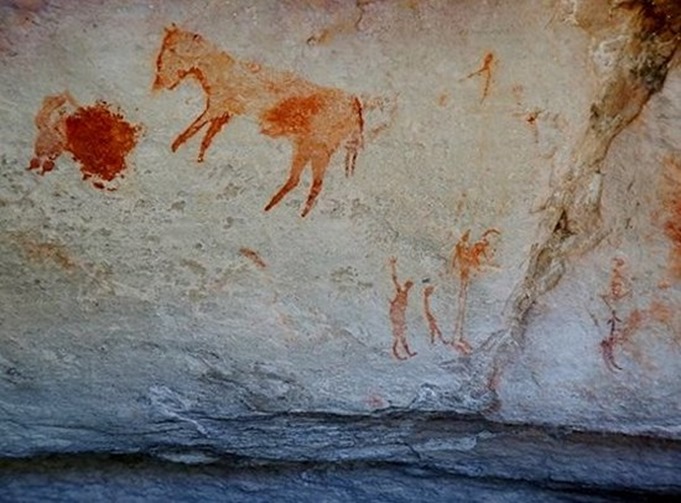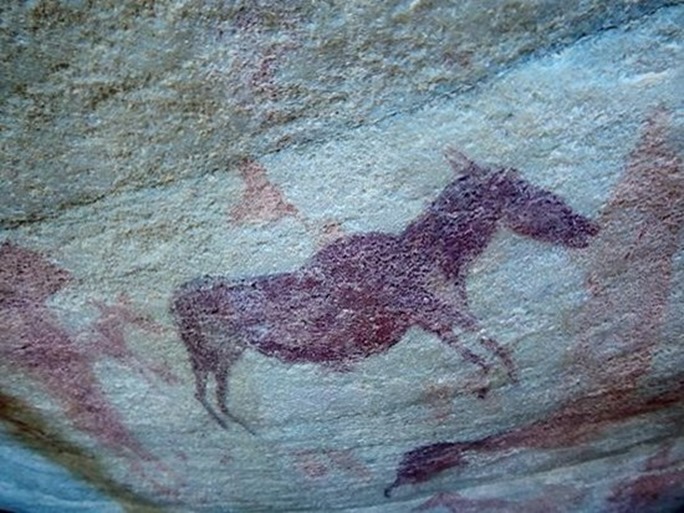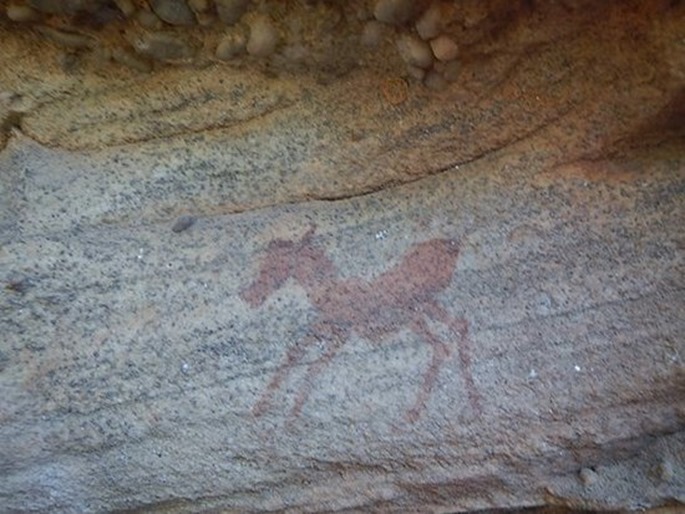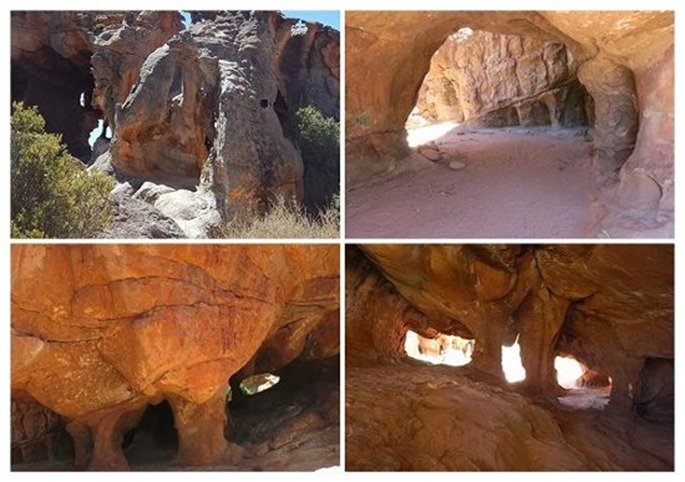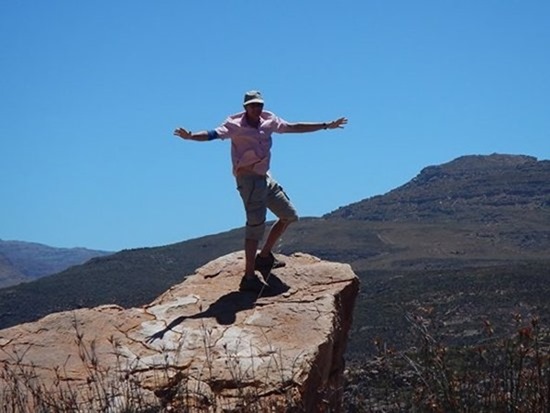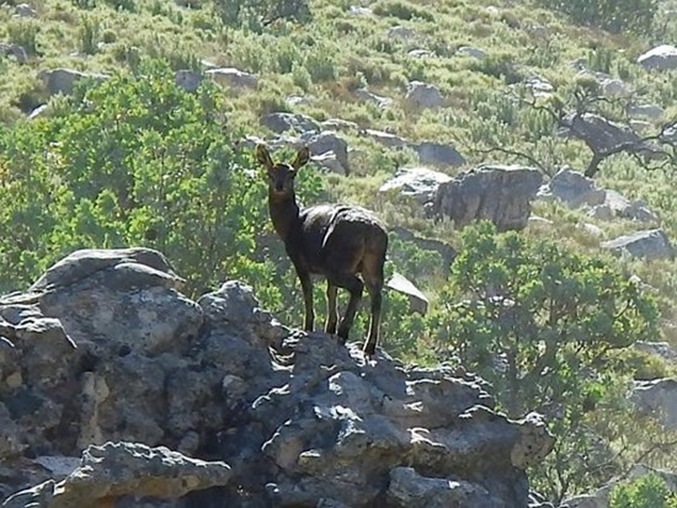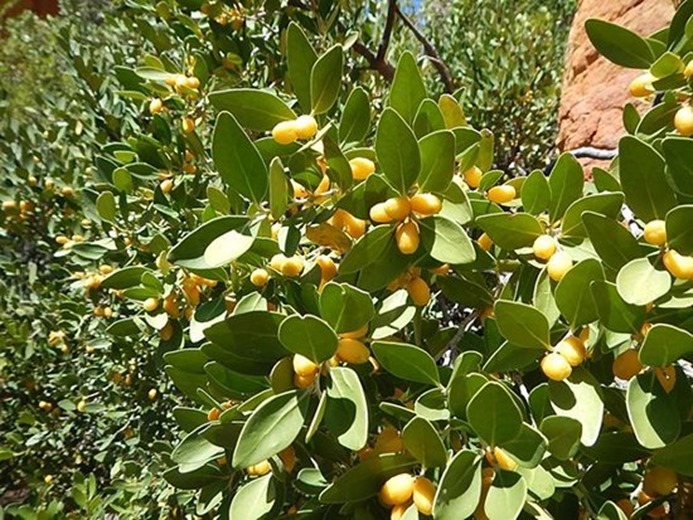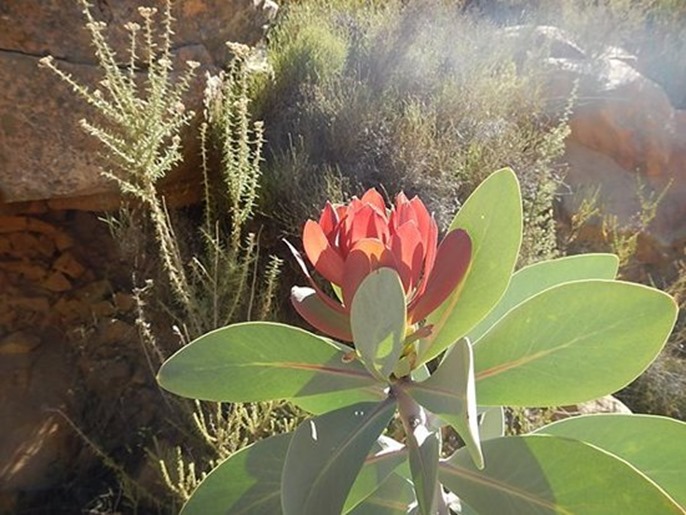The Cedarberg and the San People

|
The San people were the earliest people to populate Southern Africa long before the arrival of the Bantu-speaking peoples, and thousands of years before the arrival of Europeans. They were nomadic hunter gatherers who lived in harmony with their environment and had a loose non-hierarchical social structure. The San ancestors are the people who left their paintings on rocks and whose languages are characterised by various click sounds on some of the consonants. We wanted to see some of the rock art left by these interesting people. Some of the best is found around the Karoo, the large semi-desert area a few hundred miles to the north east of Cape Town. However, this would have meant an 8 hour drive and on further research we discovered that there was an area much nearer, just 150 miles to the north. The Cedarberg is like a small version of the mountainous Drakensberg to the east, with some quite stunning scenery and plenty of San Rock art.
The rock is largely sandstone that in places it has been weathered into strange shapes. This is a rock known locally as Lott's wife. She stands amid a forest of weird and wonderful rock formations.
Our first stop was at a rather basic bush camp that overlooked a remote valley with some rock art on this rocky outcrop. Known as Leopard Rock, with a deep cleft and chimney it has also been the home of leopards in the past.
This place had marvellous views across the valley where it lay and many, many birds visiting the camp where the owners provided water for them.
Our second stop was at the very isolated Oudriff Farm on a remote riverside with beautifully appointed open plan bungalows made from straw bales rendered in sparkling white.
Swimming in the lazy river and soaking up the tranquil atmosphere was accompanied by the most delicious food cooked by the owners who were pesc/vegetarians like us but also kept the meat eaters very happy.
The San people left rock art wherever there were sheltered corners.
There is no certain interpretation of these paintings although consultation with the San people still living a traditional hunter/gatherer life style in the Kalahari has helped modern understanding of these art works which record the life and beliefs of the San ancestors.
Just about any overhang with a smooth face seems to have been used and now records how these people lived in balance with the natural environment. It is thought that much of the art was done by the shaman when in a trance like state invoking the help of the ancestors to bring rain, provide good hunting, to give thanks or solve difficult problems. The painting was done with black, red, white and yellow pigments. These pigments were derived from clays, bird droppings, ash, the black tar formed from decomposition of dassie (hyrax) middens and earth ochres some of which we saw in the area. It is mainly the black and particularly the red pigments that have survived, the others being more susceptible to light and chemical action.
The dassie is about the size of a rabbit but with shorter legs, it is an athletic creature which can scramble and leap over rocks at amazing speed.
An ancient dassie midden, this was quite close to some of the rock paintings.
Dassie middens are places where these animals urinate, the water and ammonia evaporates leaving mineral deposits from the plants the dassies have eaten, Some of these middens are enormous as the hygienic little dassies continue to use them over many decades and centuries. The middens are sticky when wet and various wind borne items get trapped. The mineral deposits dry out over many years and harden to become a shiny dark brown almost crystalline substance. This, it is said, has been crushed and dissolved in water in the past as a cure for arthritis and other ailments.
Researchers have dated one midden in the Eastern Cedarberg to be 40,000 years old. By taking core drillings of these middens and analysing the different layers which contain seeds, pollen, feathers and insects trapped there, they are able to identify what plants and animals were in the area during that specific period.
In some parts of the country the San art dates back as far as 20,000 years but although it is known that the ancient San ancestors lived in The Cedarberg for over 150,000 years, it is thought that they only started painting here about 5,000 years ago. The most recent paintings can be most accurately dated and are only a few hundred years old showing, as some of it does, wagon trains, men with rifles and people in European dress for instance.
The Sevilla Rock Art Trail
Sevilla is an area with many rock art sites that has been developed into a mapped trail, very necessary to find the paintings but not all are marked. Some are in positions that have become dangerous through rock falls, some are very fragile and too precious to encourage visitors who sometimes, believe it or not, vandalise the paintings by scratching their name or writing some ludicrous message over them.
The art we found here was of animals and people including this group of 7 women dancing who show the remarkable characteristic 'steatopygia' of the San which is the ability to store fat reserves in enormously enlarged buttocks. There is also an amazing range of breasts in San paintings which could relate to age or fertility. These women are carrying sticks, thought to be digging sticks.
These hunters are thought to be some of the oldest paintings, their arrows were tipped with poisons which would paralyse their prey.
Lots of animals
and many more.
As well as the paintings there are some impressive cave areas, fossilised beaches and dramatic overhangs which add to the mysterious landscape.
The Cedarberg – a dramatic and beautiful wilderness for hunter gatherers.
Klipspringer
Wild olives
Protea
S/V Gryphon
II |

